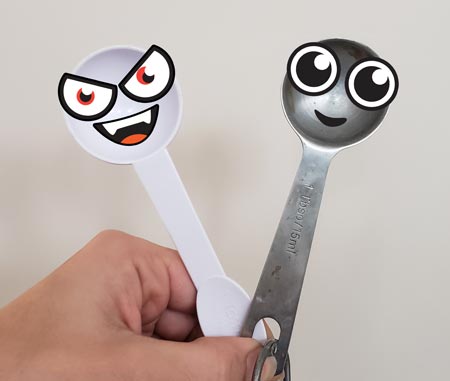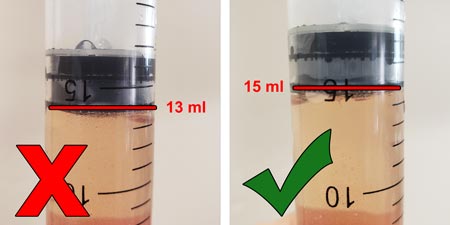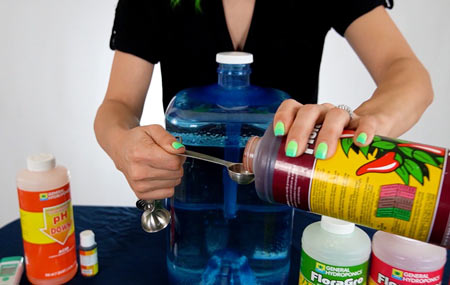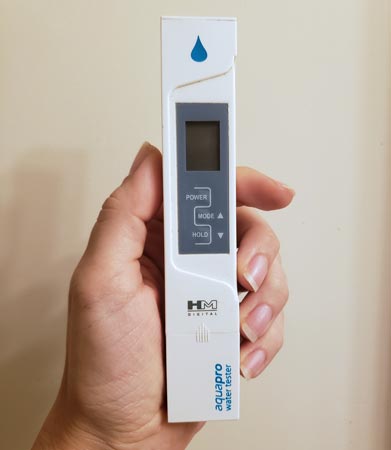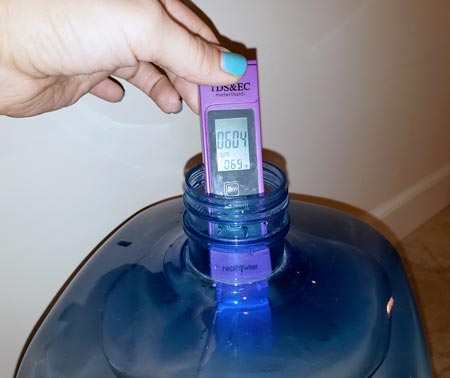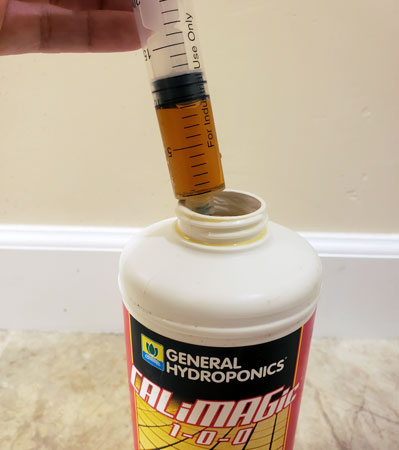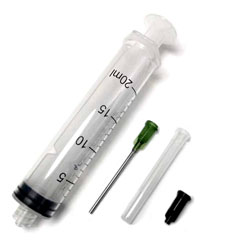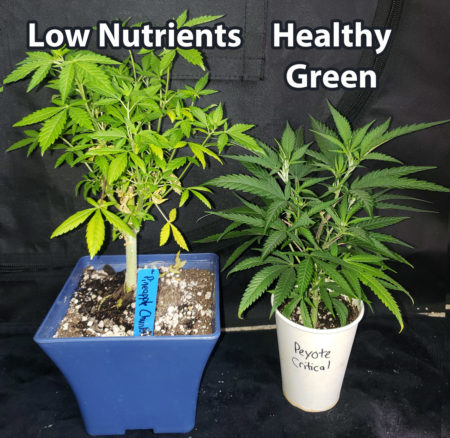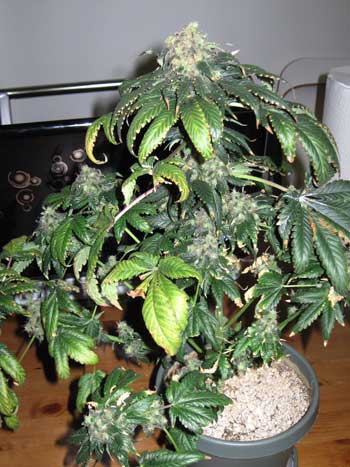by Nebula Haze
Did you know a secret foe may be lurking right in your grow room? This enemy plagued me for years and I never even knew it was there.
The evil spoon on the left caused a years-long mystery that followed me from house to house
I like keeping track of things. After mixing nutrients I always measure the PPM (parts per million – how much “stuff” is in the water) and write it down. But every once in a blue moon, something weird would happen. The PPM randomly fluctuated. For example, instead of 600 PPM, the same amount of nutrients would result in 550 PPM. With strong mineral-based nutrients, a 50 PPM difference can cause nutrient problems so the mystery was worth figuring out. I thought the PPM of my tap water must be fluctuating, but it always measured the same out of the tap. I was shocked when it happened after I moved to a new house. Probably not the tap water then.
One day I figured out the mystery. I normally use a specific set of metal measuring spoons. But there was a cheap white plastic tablespoon floating around and every once in a while I’d use that one instead. What I didn’t realize is that these two spoons were measuring out different amounts of nutrients. One day I made the connection and used a syringe to measure the exact amount held by each one. I learned the “bad” spoon measures less than it’s supposed to.
Both spoons are supposed to be 1 tbsp or 15 ml. Unfortunately, the evil plastic spoon only holds 13 ml. Whenever I used it, I was giving 2 ml less of concentrated nutrients, which can make a surprising difference.
It seemed like my nutrients would randomly fluctuate a couple of times a year… because they were.
Do you measure your cannabis nutrients with measuring spoons? Many growers use similar spoons to measure out nutrients. They’re easy to use, but not always the most accurate.
Measuring spoons may sometimes be inaccurate, but there are great solutions and workarounds to ensure you measure your nutrients perfectly every time (even if you still want to use spoons).
Solutions, Alternatives, and Workarounds
PPM / TDS meter
Note: This is different from a PH Meter, which measures the pH of the water.
These meters measure how much “stuff” is in the water. TDS stands for total dissolved solids and PPM stands for parts per million. I always check the PPM of my nutrient water and write it down. That way if plants look pale (need more nutrients) or dark (need less nutrients) I can refer to the PPM they’ve been receiving to help me precisely raise or lower the nutrient levels. Measuring the PPM is how I first realized something was going wrong with my measuring spoons.
A PPM / TDS Meter lets you track how much “stuff” is in your water. No more wondering. Just about any model gets the job done. I’ve used this HM Digital Aqua Pro for almost 5 years and it works great.
How I Use a PPM Meter
1.) Always keep a grow journal.
This isn’t just about PPM meters, a simple journal quickly improves your grow skills by allowing you to refer back. For example, a Google Doc on your phone or even just a piece of paper and pen to write down the date and a quick summary. Record things like…
- Note the germination date, when you initiated 12/12, did plant training, etc.
- When watering, write which nutrients and how much water you gave each plant
- Any problems? How do plants look?
2.) After mixing nutrients as normal, measure the PPM and write it down in your notes.
3.) Watch plants to know what you need to do with your nutrients.
- Add more nutrients – Increase PPM when plants look pale/yellow
- Give less nutrients – Lower the PPM if plants look dark green, leaves appear clawed, or you see nutrient burn. These are signs the plant is getting too high levels of nutrients (note: brown leaf tips often signal nutrient burn, yellow tips on the leaves closest to the light is often a PH problem or too much light)
This allows you to always keep track of how the nutrient levels are affecting plants. If you have an issue with measuring spoons (like I did earlier in the article) you’ll quickly realize it because the PPM will change unexpectedly.
A PPM meter lets you keep track of overall nutrients levels in your water and how they change over time.
Syringes
Syringes are more likely to be accurate than measuring spoons and as a bonus don’t spill.
These blunt-tip syringes let you measure nutrients to the exact mL (get the blunt tip kind so it’s not sharp)
Get Blunt Tip Industrial Syringes
Always measure the same way (use same spoons)
If you always use the same measuring spoons, it doesn’t matter if they’re accurate as long as you do one thing: pay attention to what your plants are trying to tell you. In fact, you should do this anyway because every plant, water source, and environment is different.
Plants turn pale all over when they want higher levels of nutrients. If you see this, raise your overall nutrient levels.
When plants get too many nutrients they turn dark green and may have “clawed” leaves and brown tips. This plant wants you to give lower levels of nutrients.
Even if you have inaccurate measuring spoons, this method will help you adjust nutrient levels (just always use the same spoons and measure the same way).
One of my favorite phrases for growing cannabis is, “If it ain’t broke don’t fix it.”
When it comes to changing things in the grow room, focus on changing things that provide solutions to your problems. Don’t just buy a bottle of something because it has cool packaging. Get a root supplement because your plants are getting root rot. Figure out your limiting factor to improve your yields. Or if you’re unhappy with bud quality, look at what causes bud quality problems instead of trying random hacks or unknown solutions. This has been a huge lesson for me in growing.
Happy growing!
Nebula Haze
GrowWeedEasy.com

